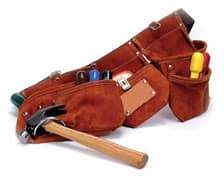by Agnes Akiko Kan, Assoc AIA
 |
Has anyone not heard of the “one-stop shopping” offer by the dentists who will do Invisalign followed by implants and crowns? Many of those patients are not happy with the results of orthodontic tooth movement, and they eventually settle for more extensive and expensive restorative cosmetic measures. For the most part, these dentists are driven by profit instead of respect for the expertise of an orthodontist. In this scenario, the patient is there not to receive the “best” treatment, but to give free reign to the dentist to charge as much as he or she can. If in the process lies are told, they are overlooked for the sake of a quick buck. Does this happen only in dentistry?
Imagine a society in which the patients do not visit the orthodontist; instead, they buy their braces, along with the treatment plan, directly from the manufacturers of orthodontic appliances. It is the next level of the “one-stop shopping” concept. It is a good deal for the manufacturers because there are no professional standards or ethics. The manufacturer tells the patient what they need, convince the patient that it is what they need, and go ahead and sell as much as possible. The patient has no advocate.
 |
| Agnes Akiko Kan, Assoc AIA |
Know Your Pros
If an orthodontist is looking to build a new office and the builder is the same person who does the architectural drawings, serves as the mortgage broker, and does the building, who will protect the buyer when things are not done right? If you desire professional results, you must work with professionals. Professionals are not one-stop shopping places.
The average graduating young orthodontists, unfortunately, have no reference point when it comes to building a practice. They are unaware of what they do not know and what easy prey they are. Young orthodontists’ sophistication was provided by the lunch-‘n’-learn session speaker’s eagerness to sell their wares. In return, they promise to build an unimaginative box—which they call an orthodontic office—to place those wares. In the absence of experience or professional help, it is easy for unsuspecting young orthodontists to have the wool pulled over their eyes. Most of the orthodontic programs do not seem to have a structured course in building and managing a practice. Proper construction is a very complicated process.
Just as there are professional orthodontists, there are design services specialized in orthodontic offices. The newly built orthodontic office should be a turnkey operation. It is very common for the unsuspecting orthodontists to spend a great deal of money and not get what they really need. Oftentimes, if they are not falling prey to the one-stop shopping outfits, they are engaging too many consultants and getting mixed up in confusion and the inability to make a good, sound decision. Interestingly, there are orthodontic experiences that are not dissimilar. Properly done, the orthodontic office design services should be provided (depending on the scale and the complexity of the project) by an architect, by an interior designer, or sometimes by both, along with experienced engineers; and the architect should help the orthodontist choose the contractor, not the other way around.
Building from the Ground Up
The majority of orthodontists these days build their offices in an office suite located in a commercial building. A freestanding orthodontic office is rare, simply because of a lack of availability of property and the complex process of ordinances, variances, and permits. Even in the process of establishing a sound lease agreement, the important thing is to know what to ask and what to negotiate with the seller or the building owner before signing the contract. If you miss the opportunity to speak up, you have missed the boat.
An experienced architect who has dealt with such clients in similar situations ought to be able to offer valuable advice. The earlier you seek professional help from an architect experienced in orthodontic offices, the smarter the decisions you can make and the less likely you are to waste time—the most valuable resource we all have.
With today’s economy, more people have chosen not to retire. This makes the purchase of an existing practice nearly impossible. Asking a salesperson how to go about building a new practice is a big mistake. Salespeople exist to sell. This is how they put bread on the table. Everyone must remember what your grandmother told you when you were little: There is no such thing as a free lunch. If you don’t know what to purchase, one way to know is by looking at the prices.
Some orthodontists go to an equipment company and receive so-called free design services from their in-house designer, the results of which will have to be redesigned by an architect. Clearly, the designer who works for an equipment company cannot be concerned about the ergonomic issues for the orthodontist or the competitive identity of the new practice. The in-house designer for an equipment company has to protect the business interests of the equipment company.
Some orthodontists talk to a contractor or a construction company and receive free design service from the contractor’s in-house designer with many invisible strings attached (such as using them for the construction service and using the products and equipment specified by them). Some construction companies offer design/build services where the design is free and absorbed in the construction cost. What do you think the primary concern of a contractor’s designers might be? If they are in business, they have to be concerned about making good profit from the project. Therein lies the simplest form of conflict of interest.
The knowledgeable orthodontist will talk to an independent architect or interior designer to create and develop the design, construction documents, and specifications in order to send out the project for a competitive bid among several contractors, especially in this market. It is critical that your architect provides a standardized Bid Form and scrutinizes the bid proposal in order to award the bid to the most worthy contractor and file a building permit in the township.
Architects, by simply knowing what to ask the bidders, can also inform orthodontists about the current market situations and best guide them in the competitive bid process to make sure that the orthodontist will choose the contractor with the best quality, credentials, and construction cost for the owner.
It is also important to use an American Institute of Architects (AIA) Contract Between Owner and Contractor, a legal document that protects the owner’s interest, not the contractor’s interest. You might have learned this lesson from a real estate transaction: It is better that the Purchase Agreement or Agreement of Sale is drafted by your own attorney, not by the attorney of the party you are doing business with.
Controlling Costs
Architects then monitor the contractor’s work progress and coordinate with equipment company consultants, network technicians, township officers, building owners, and the client—all to protect the orthodontist’s interest and achieve the best outcome for his or her design project. Moreover, if you do not want to be hit with an unexpected change-order invoice from a contractor after completing a construction project, it is smart to have your architect review and verify the periodical Pay Request, a standardized AIA document used by a contractor to bill the owner.
A set of well-coordinated and highly specified architectural and engineering design documents are critical to receiving a tight cost estimate from contractors. Inflated numbers due to lack of clarity will not do; loose design specifications are bound to be very confusing and costly. A careful and detailed coordination job is everything in producing a successful design project, which ends up saving dollars by preventing change orders after construction starts.
An architectural firm that specializes in design projects for orthodontists is not just for doing floor plan layouts. Instead, such firms can have various aspects of knowledge related to the orthodontic industry, and are able to build practices within the framework of the client’s personality, ambitions, and the character of the space to be built. It is not simply about putting the colors together or creating the office layout that functions the way you are familiar with. It is wise for an orthodontist to allow the architectural firm to design the office and produce a graceful practice behavior in the newly designed environment to establish a trustworthy, efficient, highly intelligent, and quality practice.
|
To read more orthodontic opinion articles, search for , on this page. |
I spent most of my childhood years and young adulthood in Japan. As a kid, I used to look forward to getting a small surprise box, called “omake” within a carton of cookies. Omake comes with different surprise items. Often this was what made the cookies worthwhile for me. Each orthodontic office should have such a surprise box for patients and their mothers to look forward to receiving.
Nothing makes me happier than receiving a phone call from a former client telling me how his startup numbers have outdone his expectation and how he thinks it has something to do with the office environment. Isn’t it great to be able to contribute our talent and service to the process of building a successful practice? It is worth being an architect!
Agnes Akiko Kan, Assoc AIA, is co-founder and owner of CIVITAS Architects, Philadelphia. She can be reached at









